#Silver nanoparticles
Explore tagged Tumblr posts
Text
2 notes
·
View notes
Link
1 note
·
View note
Text
Silver Nanoparticles Market Business Overview, Trends Analysis, Growth, Demand and Forecast To 2029
Nanotechnology has been a highly promising technological innovation. By developing an intricate level of understanding of nanoparticles, their characteristics, and reactions in certain conditions, scientists have been able to unlock a whole plethora of scientific possibilities. For instance, silver nanoparticles have several peculiar properties which can be translated into numerous applications in the pharmaceuticals, electronics, cosmetics, and food industries. It is being used in the electronics industry amidst the growing trend of miniaturisation and its desirable corrosion resistance, thermal and electrical conductivity, and stability in extreme environmental conditions. On the other hand, silver nanoparticles are also used to develop antimicrobial textiles. The nanoparticles have notable viability in the pharmaceutical industry, particularly in developing new treatment methods. The growing application pool of this material is expected to create tremendous business outcomes for the global silver nanoparticles market in the study period.
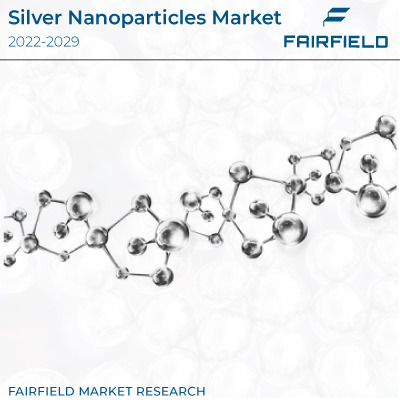
Sound Demand for Colloidal Silver Nanoparticles to Nurture Silver Nanoparticles Market
Considering the promising applications in healthcare and pharmaceutical industries, market players are directing robust research and development funding in studying silver nanoparticles. To this end, the colloidal silver nanoparticles are expected to showcase an elevated increment in demand. This type of specialised silver nanoparticle has an enhanced ability in healing skin disorders and mending wounds. Moreover, it has been considerably successful in treating diseases such as flu, pneumonia, eye infections, and shingles among others. The applications of colloidal silver nanoparticles are expected to increase with each new pharmaceutical application. These developments are funnelling to benefit the growth of the global silver nanoparticles market.
Get a Sample/TOC Copy of Silver Nanoparticles Market:
https://www.fairfieldmarketresearch.com/report/silver-nanoparticles-market/request-toc
Notable Pharmaceutical Industry Applications to Create Strong Tailwinds for Global Silver Nanoparticles Market
The occurrence of chronic illnesses has been growing at an alarming rate in the past few years. To combat this mounting healthcare challenge, scientists and drug manufacturers are actively exploring novel therapeutics. Several new studies are being conducted to research different components and chemicals. To this end, silver nanoparticles have showcased tremendous promise as an ingredient in medicines. It is being used to develop anti-cancer medications along with applications in bone healing and wound care. In addition, silver nanoparticles are also used for improving the immunogenicity of vaccines. Such promising medical science breakthroughs are creating sound business opportunities for the global silver nanoparticles market.
Nanotechnology Innovations in Pharmaceutical Sector to Establish North America’s Leadership in Silver Nanoparticles Market
Increasing R&D efforts in regional pharmaceutical and electronics, coupled with a high concentration of key market players is boding well for the silver nanoparticles market in North America. The region has one of the most technologically advanced healthcare industries. Moreover, the growing occurrence of cancer in key regional economies such as the USA is incenting more research on silver nanoparticles. On the other end of the world, emerging economies in Asia Pacific are providing impetus for the silver nanoparticles market due to their paced industrial growth and high population.
Major Market Players
Some of the key major players in the global silver nanoparticles market include Sigma-Aldrich, Nanocs, EPRUI Nanoparticles & Microspheres, American Elements, US Research Nanomaterials, Nanoshel LLC, Ames Goldsmith Corporation, Advanced Nano Products Co. Ltd., Strem Chemicals Inc., Thermo Fischer Scientific, and Tanaka Holdings.
Do You Have Any Query Or Specific Requirement? Request Customization of Report:
https://www.fairfieldmarketresearch.com/report/silver-nanoparticles-market/request-customization
Browse Our Latest Trending Reports:
Vertical Farming Crops Market Global Industry Analysis (2018 - 2021) – Growth Trends and Market Forecast (2022 - 2029) https://www.openpr.com/news/2900117/vertical-farming-crops-market-2022-2029-illuminated-by-new
Cloud AI Market Global Industry Analysis (2018 - 2021) - Growth Trends and Market Forecast (2022 - 2029)https://www.openpr.com/news/2900114/cloud-ai-market-trend-shows-a-rapid-growth-by-2029
Fuel Cell Market Global Industry Analysis (2018 - 2021) - Growth Trends and Market Forecast (2022 - 2029)https://www.openpr.com/news/2900112/fuel-cell-market-boosted-by-rising-demand-for-digitization
Insomnia Market Global Industry Analysis (2018 - 2021) - Growth Trends and Market Forecast (2022 - 2029)https://www.openpr.com/news/2900108/insomnia-market-growth-prospects-by-2029-with-leading-players
Offshore Mooring Market Global Industry Analysis (2018 - 2021) - Growth Trends and Market Forecast (2022 - 2029)https://www.openpr.com/news/2900106/offshore-mooring-market-with-new-principle-and-updated
About Us
Fairfield Market Research is a UK-based market research provider. Fairfield offers a wide spectrum of services, ranging from customized reports to consulting solutions. With a strong European footprint, Fairfield operates globally and helps businesses navigate through business cycles, with quick responses and multi-pronged approaches. The company values an eye for insightful take on global matters, ably backed by a team of exceptionally experienced researchers. With a strong repository of syndicated market research reports that are continuously published & updated to ensure the ever-changing needs of customers are met with absolute promptness.
Contact
Fairfield Market Research
London, UK
UK +44 (0)20 30025888
USA +1 (844) 3829746 (Toll-free)
Web: https://www.fairfieldmarketresearch.com/
Email: [email protected]
Follow Us: LinkedIn
#silver nanoparticles#global silver nanoparticles market#silver nanoparticles market trend#silver nanoparticles market share#silver nanoparticles market growth#silver nanoparticles market analysis#silver nanoparticles market forecast#silver nanoparticles market research#silver nanoparticles market size
0 notes
Text

Enhancing the antimicrobial activity of silver nanoparticles against pathogens by using tea extracts
Researchers at the Institute of Physical Chemistry of the Polish Academy of Sciences (IPC PAS) have demonstrated that green tea–silver nanoparticles as a powerful tool against pathogens such as bacteria and yeast. Their work is published in Nanoscale Advances. Their goal was to develop an efficient method to combat bacteria that are otherwise unaffected by antimicrobial agents, such as antibiotics. The overuse of antibiotics has led to the emergence of resistance to these compounds, becoming one of the biggest health threats worldwide.
Read more.
38 notes
·
View notes
Text
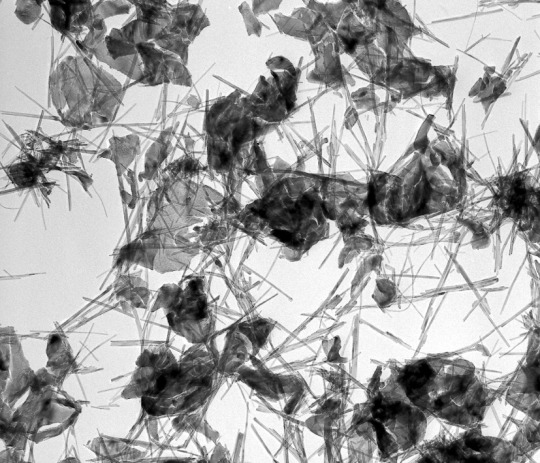
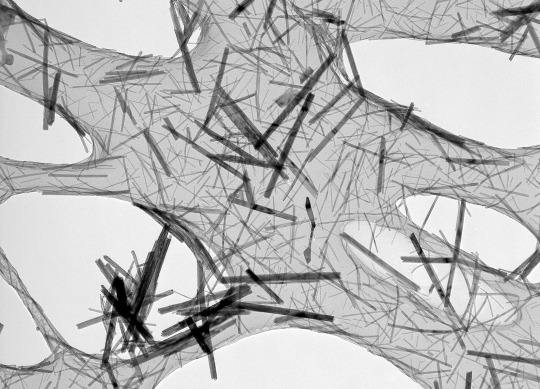
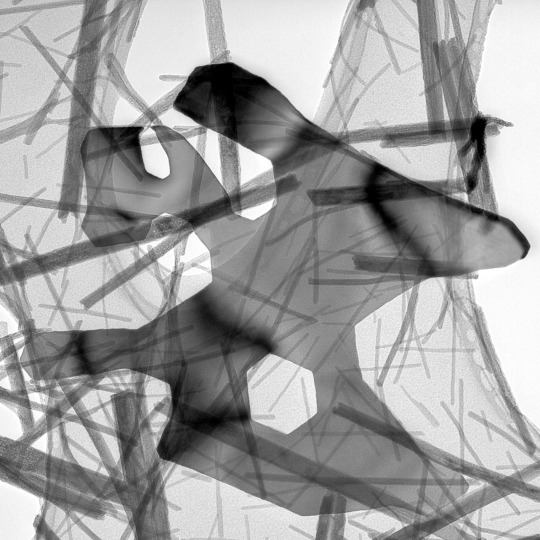
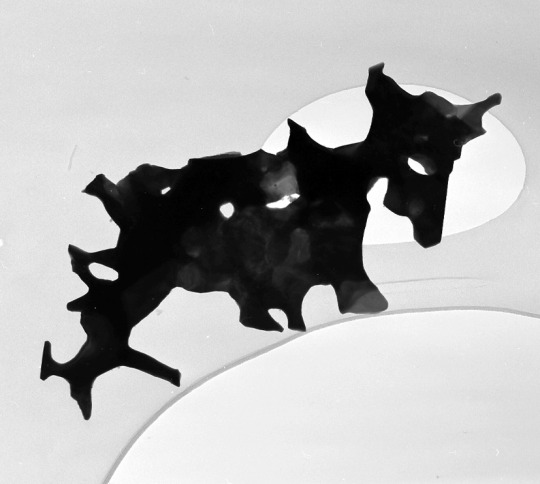

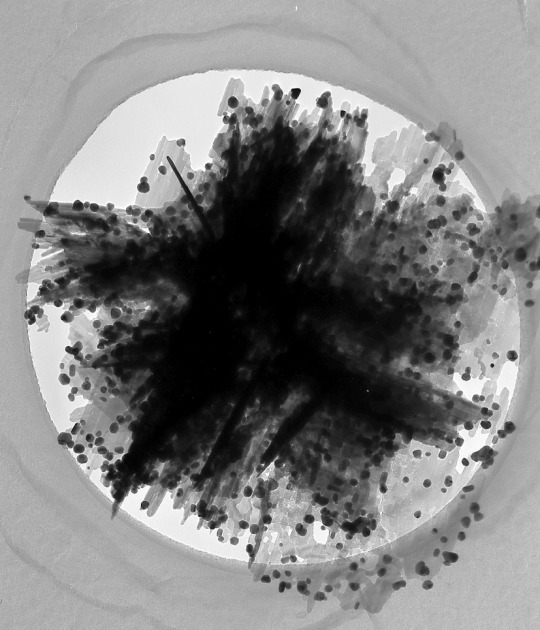



#electron microscopy#transmission electron microscopy#nanoparticles#rare earth hydroxides#zinc tungstate#silver on zinc oxide#zinc titanate#original content
9 notes
·
View notes
Video
Almond croissant by Bakery Tanapa Via Flickr: Novelty Cafe and bakery Pattaya ต้องแวะ...อร่อยมากกกก ทำเองทำมือด้วยใจ อบใหม่สดทุกเช้านะคะ พิกัด Novelty Bakery ใกล้โรงแรมดุสิต แกรนด์จอมเทียร Novelty cafe and bakery Pattaya+ TEL : +6686 401-4415 MAP : lnkd.in/gwyWipvw Bloggang : lnkd.in/gz2_5SjK Blog : lnkd.in/gck_eJ7T Delivery : lnkd.in/gr-FC5Mz wixsite : lnkd.in/gurmXdsv
#Silver Nano#silver nano คืออะไร#silver nano spray#silver nano technology#Silver nanoparticles คือ Silver nano อย. ซิลเวอร์นาโน ซื้อที่ไหน#นาโนซิลเวอร์ ราคา#เจลล้างมือสำหรับฆ่าเชื้อ COVID-19#ต้องมีปริมาณแอลกอฮอล์เท่าไร#มาตรการป้องกันการติดเชื้อ COVID-1#9 ทำได้อย่างไร แอลกอฮอล์กี่เปอร์เซ็นต์ฆ่าเชื้อโควิดได้ การผสมน้ำยาฆ่าเชื้อ COVID-19 มีสัดส่ว#flickr
3 notes
·
View notes
Text
On Dwarves and Glass-making
A while ago, I read an article about the Lycurgus Cup, and I had some thoughts about it that I've finally gathered and organized in this meta. For background, the Lycurgus Cup is a 1,700 year-old Roman chalice that looks green when lit from the front, but looks red when lit from behind. According to the article, this is because the Romans suffused the glass "with particles of silver and gold, ground down until they were as small as 50 nanometers in diameter…The work was so precise that there was no way that the resulting effect was an accident. In fact, the exact mixture of the previous metals suggests that the Romans had perfected the use of nanoparticles…" My thought was that if the Romans could create color-changing glass like this, what are the chances that Dwarves could have done the same? Especially given the Dwarves' expertise with working with metals, it seems not unlikely that they would have the capability to create such small particles and use them in making such glass. And I could imagine it becoming a specialized product they are famous for once they begin trading with the Elves, as it seems like a product the Elves, including Caranthir would enjoy. It would be particularly notable in large quantities in a western window; appearing green in the morning, but shifting to red as the day progresses.
159 notes
·
View notes
Text
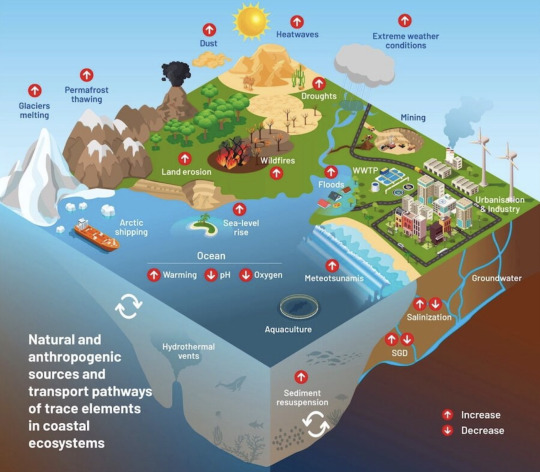
Illustration of natural and anthropogenic sources, sinks and transport pathways of trace substances in coastal ecosystems that may interact with climate impacts. Red arrows indicate expected directions of change due to climate change. Zitoun et al. 2024
Excerpt from this story from EcoWatch:
A new study is warning that trace metals like lead, arsenic and mercury that are present in ocean water can become more toxic over time as factors like ocean warming and acidity can increase the bioavailability of these trace elements.
Although these elements can naturally occur in coastal areas, their concentrations have increased due to human activities like agriculture and industrial manufacturing. Now, scientists warn that problems such as ocean acidification and warming are further strengthening the toxicity and spread of trace elements, both from natural and human sources.
“Human activities have increased the global flow of toxic metals such as lead by tenfold and mercury by three to seven times compared to pre-industrial levels,” Sylvia Sander, professor of marine mineral resources at GEOMAR, said in a statement. “Toxic elements like silver are increasingly detectable in coastal waters, originating from coal combustion and the growing use of silver nanoparticles in antibacterial products.”
The researchers found that the effects of rising sea levels, ocean warming, melting sea ice, drying river beds and ocean acidification could all play roles in the transport and accumulation of trace elements, particularly those that occur naturally. The researchers published their findings in the journal Communications Earth & Environment.
But trace elements from human sources are also contaminating the environment, with heavy metals coming into the oceans from fossil fuel and industry activities. Further, shipping and plastics can also introduce more trace elements into the oceans, especially because plastics can bind certain metals, including lead and copper.
As ocean temperatures rise, the bioavailability of trace elements increases, meaning it becomes easier for marine life to absorb the trace elements, the researchers explained. Trace elements, especially copper, also experience an increase in bioavailability and solubility in the presence of more acidic water. Copper can become extremely toxic to marine life in higher concentrations.
In a recent report on planetary vital signs, a team of international scientists confirmed that ocean warming and acidification had reached record extremes in recent years.
14 notes
·
View notes
Link
In a new study, scientists with the University of Florida have found that a combination of silver nanoparticles and antibiotics is effective against antibiotic-resistant bacteria.
The researchers hope to turn this discovery into viable treatment for some types of antibiotic-resistant infections. Antibiotic-resistant infections kill more than a million people globally each year.
For centuries, silver has been known to have antimicrobial properties. However, silver nanoparticles—microscopic spheres of silver small enough to operate at the cellular level—represent a new frontier in using the precious metal to fight bacteria.
In this study, the research team tested whether commercially available silver nanoparticles boost the power of antibiotics and enable these drugs to counter the very bacteria that have evolved to withstand them.
Continue Reading
203 notes
·
View notes
Text
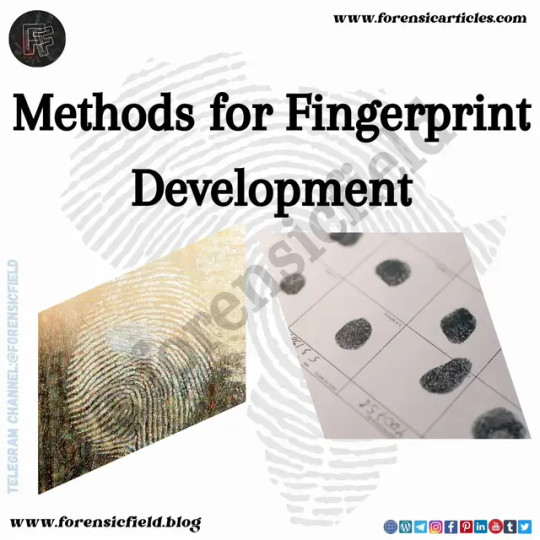

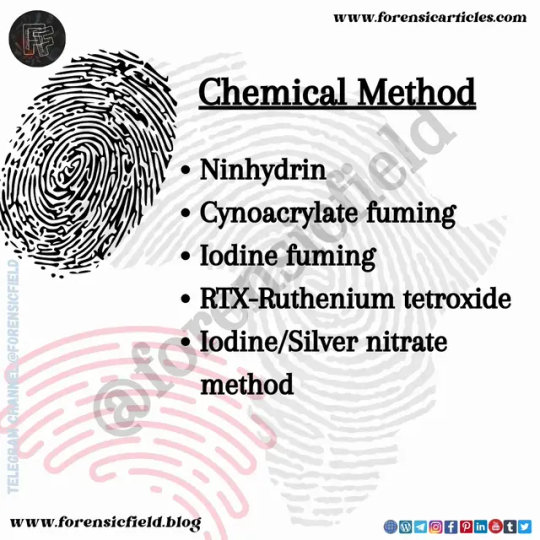
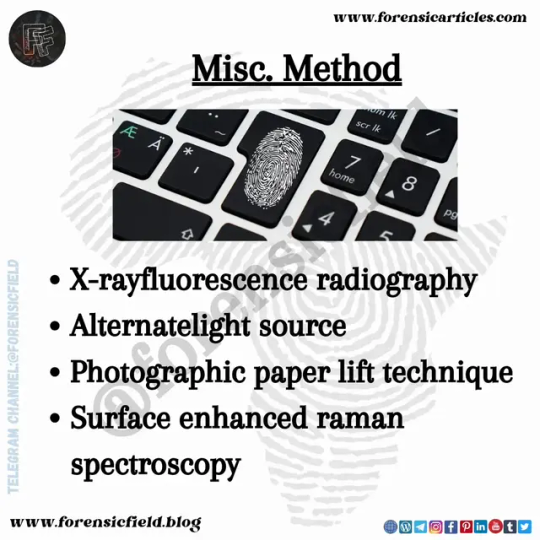
Fingerprint development methods are techniques used to enhance and visualize latent fingerprints, which are impressions left by the ridges of the fingers on surfaces. There are various methods for fingerprint development, including:
1. Powder Dusting: This method involves applying a fine powder, such as black powder or magnetic powder, to the surface containing the latent fingerprints. The powder adheres to the oils and moisture left behind by the fingers, making the prints visible.
2. Chemical Reagents: Chemical reagents are substances that react with the components of latent fingerprints, causing them to become visible. Examples include ninhydrin, which reacts with amino acids in the sweat, and cyanoacrylate fuming (Super Glue fuming), which creates a white polymer on the print.
3. Dye Stains: Dye stains involve applying a colored solution to the surface containing the latent fingerprints.
4. Physical Developers: Physical developers are solutions containing metallic salts that react with the components of latent fingerprints to form a visible deposit. Silver nitrate and zinc chloride are common examples of physical developers.
5. Laser and Alternative Light Sources: Laser and ALS, such as ultraviolet (UV) light or infrared (IR) light, can be used to visualize latent fingerprints that may not be visible to the naked eye. These sources can enhance contrast between the fingerprint and the surface, making them easier to detect.
6. Nanoparticle Techniques: Nanoparticle-based techniques involve using nanoparticles that specifically adhere to the components of latent fingerprints, making them visible under specific lighting or imaging conditions.
Each fingerprint development method has its advantages and limitations, and the choice of method depends on factors such as the surface type, the age of the prints, and the resources available in the forensic investigation.
Read More: https://forensicfield.blog/methods-of-latent-fingerprint-developement/
_________
#forensicscience #forensicfield #fingerprint #crimescene #crimesceneinvestigation #fingerprintdevelopment #criminology #criminalistics
#forensic#forensics#criminology#forensic science#evidence#criminalistic#forensic field#forensic science notes#crime scene investigation#crime#fingerprinting#fingerprints#Latent fingerprint
22 notes
·
View notes
Text


Nanoink and printing technologies could enable electronics repairs, production in space
An Iowa State University engineer floats in the air while other researchers hang tight to a metal frame surrounding and supporting their special printer. It's not the usual photo you see in a research paper. Tests aboard microgravity flights aren't your typical materials experiments, either.
The flight path to these experiments began when a research team led by Iowa State's Shan Jiang, an associate professor of materials science and engineering, and Hantang Qin, formerly of Iowa State who's now an assistant professor of industrial and systems engineering at the University of Wisconsin-Madison, wondered if their ink and printer technologies would work in the zero gravity of space.
The ink features silver nanoparticles synthesized with biobased polymers. After heat treatment, the ink can conduct electricity and can therefore print electric circuits. The printer uses electrohydrodynamic printing, or 3D printing that jets ink under an electric field at resolutions of millionths of a meter. The electric field could eliminate the need for gravity to help deposit ink.
If the technologies work together in zero gravity, astronauts could use them to make electric circuits for spacecraft or equipment repairs. And astronauts might manufacture high-value electronic components in the special, zero-gravity environment of space.
NASA wondered if it would work, too.
Diving into microgravity
Researchers bolted the printer to the floor of a jet and prepared for a "roller coaster, basically," Jiang said.
The NASA plane would continuously climb and dive, going in cycles from about 24,000 feet over Florida to 32,000 feet, then back to 24,000. The dive phase produced about 10 seconds of pure zero gravity.
"It was exciting and new," Jiang said.
Motion sickness was a problem for some. Others enjoyed the thrill of it. Jiang felt "frozen" the first time he experienced microgravity. "I was blank."
But that didn't last. "There was so much time and investment in this project. We wanted to achieve good results."
But printing for a few seconds at a time on a microgravity flight "is a very challenging experiment," Jiang said. "It's so easy on the ground where everything is stable. But if anything gets loose during the flight, you lose your printing."
The first microgravity flight was a good example. The printer wasn't adequately secured against the plane's shakes and vibrations.
"These are very intense experiments that require a lot of teamwork and preparation," Jiang said.
So, the team went back to work, made some changes, made more test flights and produced better results.
"This proof-of-concept microgravity experiment proves the unique capability of (electrohydrodynamic) printing under zero-gravity conditions and opens a new venue for future on-demand manufacturing in space," the researchers wrote in a paper published in Applied Materials & Interfaces.
Making a new nanoink
The key innovation by Jiang's research group was developing a new laboratory method to synthesize the ink with its silver nanoparticles.
"This is a new combination of materials and so we needed a new recipe to make the ink," Jiang said.
Both programs "strive to support innovative and leading research in Iowa," said Sara Nelson, director of the programs and an Iowa State adjunct assistant professor of aerospace engineering. "We are thrilled to have supported Dr. Jiang's research. His work has helped to build Iowa's research infrastructure and is an important part of NASA's strategic mission."
The project also makes use of an abundant Iowa resource, plant biomass.
The ink includes a biobased polymer called 2-hydroxyethyl cellulose, which is typically used as a thickening agent. But it is also a cost-effective, biocompatible, versatile and stable material for the inks necessary for high-resolution ink jet printing under an electric field.
"There is a lot of biomass in Iowa," Jiang said. "So, we're always trying to use these biobased molecules. They make a wonderful polymer that does all the tricks for us."
Jiang called that "the biggest surprise of this research. We didn't know that before. Now we know what we can do with these biobased polymers."
The Iowa State University Research Foundation has filed a patent on the new nanoink and the technology is currently available for licensing.
"This success is really just the beginning," Jiang said. "As humanity ventures deeper into space, the need for on-demand manufacturing of electronics in orbit is no longer science fiction; it is a necessity."
Next up for the researchers could be the development of 3D space printing for other electronic components such as semiconductors.
After all, Jiang said, "You can't just make one component and assemble an electronic device."
TOP IMAGE: Researchers—as well as a toy Cy the Cyclone—test their nanoink and printer technologies during a NASA microgravity flight. Pictured, left to right, are: Fei Liu, Yanhua Huang, Matthew Marander, Xuepeng Jiang and Pavithra Premaratne. Credit: Shan Jiang
LOWER IMAGE: Credit: ACS Applied Materials & Interfaces (2024). DOI: 10.1021/acsami.4c07592
6 notes
·
View notes
Text
btw more skin removal posting soon
one of the things I'm gonna do is a bunch of biopsy punched pupils that i'm gonna have my subject treat differently for healing. this round we're focusing on chemical irritants/balms. prolly gonna try:
salicylic acid (small amounts)
hydrogen peroxide
topical steroids
tretinoin
medical honey
silicone scar gel
zinc oxide
silver nanoparticle hydrogel (72 hours)
silver nanoparticle hydrogel (1 week, to test if cytotoxicity has measurable impacts)
if y'all have other suggestions, let me know...
3 notes
·
View notes
Link
1 note
·
View note
Text
Gulabpash 2104
As a vessel of tradition and a keeper of ceremonies, the gulabpash had always been more than just an object; by the year 2104 it had transformed into something quite different from what it had been. It started out years ago as a modest gomutra, or fragile container of rose water, used in Indian homes to bless individuals and purify environments. It was a delicately fashioned piece of copper or silver that was handled by human hands to purify the soul and the air. Sprinkling water was considered a spiritual act in those days, with the idea that it might purify the air and realign energy.
The gulabpash found itself changing along with society and the complexity of the planet. An era of technology and relentless speed had replaced the world it had known, which was one of peaceful homes, leisurely rituals, and tight-knit communities. By the time the gulabpash was originally conceived, cleansing had to address far more than only the spiritual or physical aspects of the world. Cities had gotten denser, higher, and dirtier. People's lives were no longer limited to the physical places they lived; instead, they were extended into digital realms where streams of information, light, and sound constantly overstimulated the mind.
New types of gulabpash emerged during this period. The object's ability to adjust to the world's changing needs was acknowledged by engineers and designers in the middle of the twenty-first century. What started out as a straightforward vessel evolved into a technological wonder, keeping the simplicity of its design while evolving into an advanced, multifunctional tool. The new gulabpash had bio-sensors that could sense the quality of the air, the emotional and mental energy of the surroundings, and even the increasing amounts of digital noise that were interfering with people's life.
Now, the gulabpash could float on its own, a silent defender of areas, moving across rooms like a soft wind. It has AI-powered algorithms built into it that took in data gathered from those around it and changed its behavior to suit their requirements. It would release a mist whenever someone was nervous or tense, but this time the mist was made of nanoparticles that were meant to cleanse the user's thoughts as well as the air, not just rose water. It could detect and molecularly neutralise pollutants, allergies, and poisons in the air. More than that, though, it was able to identify digital clutter—the unseen frequencies of overstimulation brought on by continual connectivity—and release particles that relieved the noise by calming the brain interactions.
In a time of turmoil, the mist it spread was a healing energy rather than merely a relic from earlier ceremonies. Now, the gulabpash contained essences that could be customized for the occasion—rose, of course, but also molecular components that functioned at a biological level, assisting in the release of tension, the facilitation of breathing, and the restoration of balance. It was more than simply a household cleaner; it was a tool for mental and emotional detoxification, bringing the body and mind into harmony in ways that ancient rituals had always intended but that were now made possible by modern technology.
The gulabpash was more than an observer on its journey from house to house. It had an enormous impact on the areas it invaded. It coordinated with the core AI of future smart houses to identify changes in temperature, emotional states, and air quality. When a family sat down to eat, the gulabpash would approach and release mists that grounded the family's energies and refreshed the air. It would detect increases in cortisol levels during stressful circumstances and react by releasing calming essences that complemented brain wave modulations and blended in perfectly with the mist. Its mild yet revolutionary presence acted as a balance agent.
Gulabpash became even more vital in times of crises in this futuristic world. When towns experienced environmental disasters, gulabpash drone fleets were used to sterilize diseased areas or purge the air of harmful gases. Silently and constantly, these gadgets spread their mists across city blocks, cleaning and restoring areas that had been contaminated by human activity. Once a household personal item, the gulabpash has evolved into widespread survival gear. It was a cleansing force that was able to adapt to any size of demand, not only for the home but for large cities.
However, the gulabpash's cultural importance persisted despite its transformation into a high-tech marvel. As it has done for ages, it performed its function during ceremonial gatherings, blessing both people and places. Gulabpash floats gently among the guests at weddings, funerals, and community ceremonies, dispersing bio-remedies that are both symbolic and practical, together with sacred mists of rose water. The traditional notion that sprinkling essence into the air might purify rooms, realign energy, and bring people closer was still upheld by these rites, despite their modernization over the years.
In its most recent iteration, the gulabpash served as a tool for introspection as well. It might have intimate interactions with users through AI-driven customisation. It would detect when someone was resting, meditating, or thinking, and modify its mists accordingly. Some people found it to be a trustworthy friend that helped them cleanse both their internal and external environments. People depended on it to help them focus, relax, and re-establish a connection with themselves during times of introspection since it coordinated with their breathing.
The gulabpash had changed to meet the difficulties of a world that was constantly shifting always changing. By combining traditional knowledge with modern technology, it was no longer merely a tool of the past but rather an essential component of the future. It had endured for centuries because, despite significant changes in the manner in which it produced those outcomes, its goal—the need for purification, renewal, and peace—had remained constant.
The gulabpash continued to be a sign of continuity as it drifted gently through a house in the twenty-first century. It served as a link between the old and the modern and a reminder that certain standards never changed, regardless of how developed society got. Gulabpash's straightforward function of cleansing spaces—whether with rose water, nano-mists, or bio-sensors—was as crucial as ever in this future, when the air was dense with digital frequencies and the mind was constantly overwhelmed. It was no longer only a device for sprinkling liquid; it was now a protector of equilibrium, a silent, omnipresent force that purified not only the air but also the entire significance of coexisting peacefully with the environment.
2 notes
·
View notes
Text

Self-embedding silver nanoparticles: Researchers find the 'silver lining' in cotton gin waste
Cotton gin waste, also known as cotton gin trash, is a byproduct of the cotton ginning process and occurs when the cotton fibers are separated from the seed boll. For cotton gin waste, the treasure is its hidden potential to transform silver ions into silver nanoparticles and create a new hybrid material that could be used to add antimicrobial properties to consumer products, like aerogels, packaging, or composites. Silver nanoparticles are highly sought-after products in the nanotechnology industry because of their antibacterial, antifungal, antiviral, electrical, and optical properties. These nanoparticles have an estimated global production of 500 tons per year and are widely applied to consumer goods such as textiles, coatings, paints, pigments, electronics, optics, and packaging.
Read more.
#Materials Science#Science#Silver#Nanoparticles#Nanotechnology#Waste#Cotton#Biomaterials#Materials processing
12 notes
·
View notes
Text
honestly after my accident,, I kind of liked being in the hospital it was like oooough someone is taking care of me and I am being showered with messages from people telling me how much they care about me and love me and I love learning about medical stuff (like they used these special silver nanoparticle bandages on my leg to prevent infection how cool is that) and also the Attention like I will never ask for attention but every human needs some level of attention. also it was like "there is something obviously wrong and you are being so brave and strong for coping/dealing with it" as opposed to "there is nothing wrong and i am fine (lying)." sometimes I yearn for that again. treatment doesn't quite hit the same because everyone there also has an ed so it doesn't make me ~special.~ this is so dumb fr fr anyway send post
2 notes
·
View notes